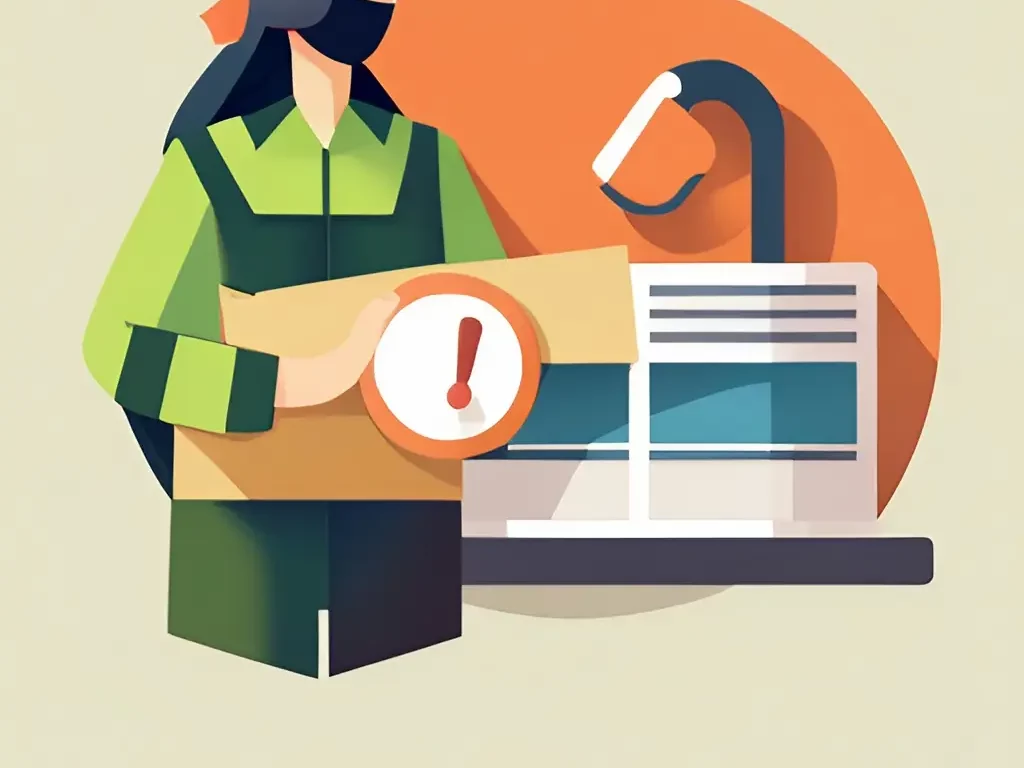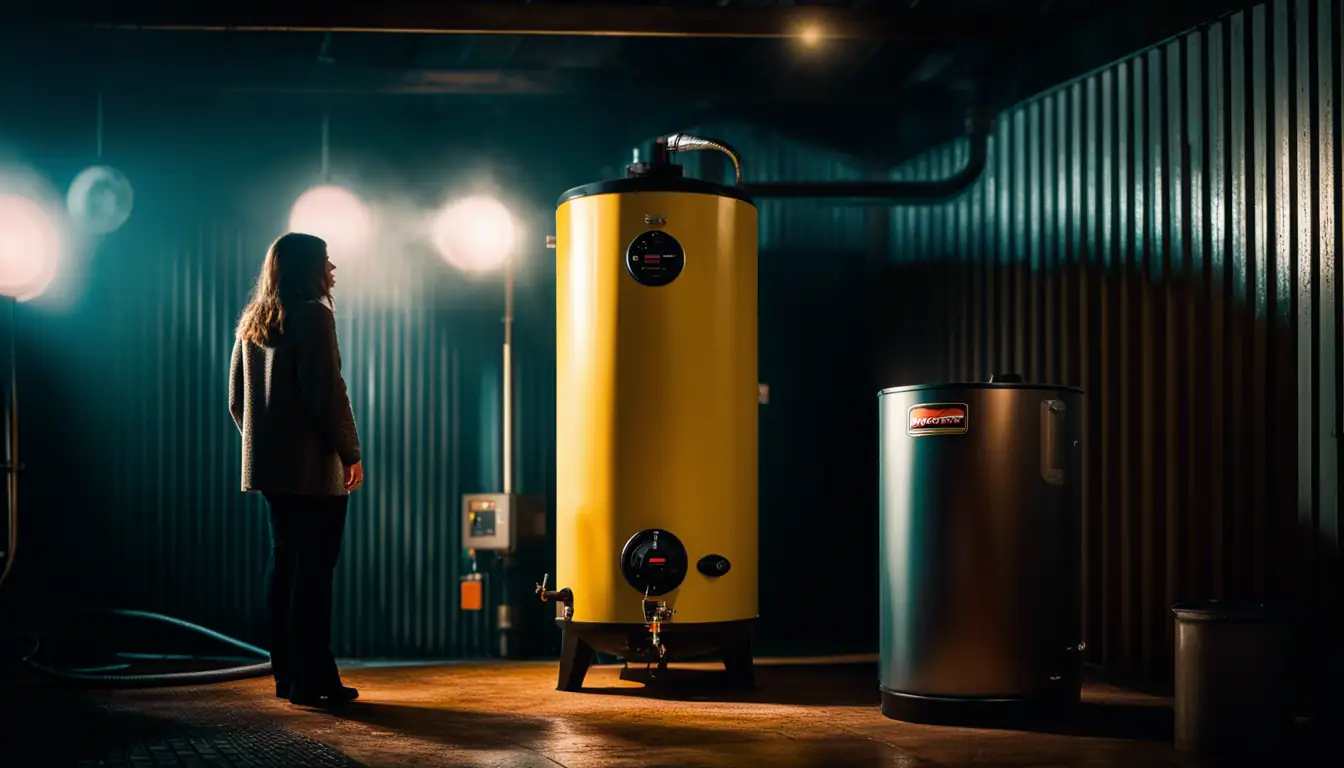Ensuring your water heater remains efficient and effective is crucial for any household, yet sediment buildup can significantly compromise its performance.
This article will guide you through understanding why sediment accumulates, the issues it can cause, and provide straightforward steps to safely flush your water heater at home, saving you time and possibly extensive repair costs.
It’s a common problem, yet many homeowners overlook the importance of addressing it until it’s too late.
- What Causes Sediment in Your Water Heater
- Simple Steps to Flush Sediment Like a Champ
- The Benefits of Regular Flushing
- Ready, Set, Assess! Quick Quiz Time
- Frequently Asked Questions (FAQ)
- Q1: How often should I flush my water heater?
- Q2: What should I do if sediment doesn’t seem to be flushing out?
- Q3: Is there any risk of damaging my water heater during the flushing process?
- Q4: Can I perform a water heater flush without professional help?
- Q5: What tools or materials do I need to flush my water heater?
- Q6: What do I do if my water heater still doesn’t work efficiently after flushing?
- Pro Tips for Flushing Your Water Heater
- Final Thoughts
What Causes Sediment in Your Water Heater
Sediment buildup in your water heater comes down to a few simple factors.
- Think of it like this – over time, your water heater can collect minerals from hard water, such as calcium and magnesium, along with bits of dirt or sand that come in with the water supply.
Additionally, small pieces from the inside of the tank itself can wear away and join the mix.
All these bits settle at the bottom, creating a blanket of sediment.
If not taken care of, this layer can lead to a variety of problems, like making your water heater work harder, reducing the quality of your hot water, and potentially causing damage.
Why Regular Maintenance Matters
Regular flushing of your water heater isn’t just a good practice—it’s crucial for its longevity and performance.
By keeping sediment at bay, you ensure that your water heater operates efficiently, thus prolonging its life and saving you money in the long run.

Simple Steps to Flush Sediment Like a Champ
Eager to take action? Here’s how you can perform a sediment flush on your own, ensuring your water heater continues to serve you well for years to come. Delta Touch Faucet Not Working? Here’s What to Do!
Safety Precautions
Before we begin, safety comes first. Always turn off the power to an electric water heater or set a gas water heater to “pilot” mode to avoid any accidents during the flush.
Supplies You’ll Need
- Garden hose
- Bucket (for testing)
- Gloves
- Protective goggles
1. Draining the Water Heater
Begin by attaching your garden hose to the drain valve situated at the base of your water heater. Ensure that the opposite end of the hose is positioned in a safe area for hot water discharge, such as a floor drain or outside where it won’t cause damage.
Remember to turn off the power or gas supply to the water heater before draining to prevent any accidents.
2. Flushing the Tank
Open the drain valve to allow water to start flowing out. Initially, you may notice water coming out muddy or discolored—this is the sediment being flushed out. It’s crucial to keep the water flowing until it runs clear, indicating that most of the sediment has been removed.
3. Refilling the Water Heater
Once the water runs clear, close the drain valve and detach the hose. Now, it’s time to refill your water heater. Remember to open the hot water taps in your house to release any accumulated air.
4. Testing the Water Heater
With the tank refilled, it’s time to power up your water heater again. Monitor it closely for any unusual noises or issues, ensuring it returns to its optimal operating state.
Step by Step: The Flushing Process
- Safety First: Remember to turn off the power to your electric water heater or set a gas water heater to pilot mode. Safety always comes first!
- Drain it Out: Connect your garden hose to the drain valve at the bottom of the tank, directing the other end to a safe discharge area. Then, shut the power or gas supply off and start draining.
- Flush Away: Open the drain valve, watching as the water (and unwanted guests) flow out. Once the water runs clear, you’ve done it!
- Refill and Restart: Close the valve, disconnect the hose, and refill your tank. Now’s also a good time to release any trapped air by opening the hot water taps in your home.
The Benefits of Regular Flushing
Through my years of dabbling in home maintenance and sharing insights with fellow DIY enthusiasts, I’ve observed that regular flushing of your water heater can yield tremendous benefits, including an extended lifespan of the unit, improved energy efficiency, and enhanced water quality.
Environmental Considerations
When it comes to flushing your water heater, being mindful of environmental considerations is just as important as the technical aspects of the process.
The water you’re flushing out, especially if it’s heavy with sediment, shouldn’t just be sent down the nearest drain.
Instead, consider using this water for non-potable purposes, such as watering your garden or lawn.
This reuses the water efficiently and prevents wastage.
If you’re in an area with specific regulations on disposal due to environmental concerns, it’s crucial to familiarize yourself with these guidelines to ensure compliance. Additionally, remember that the sediment, which may contain minerals and metals, should be disposed of properly.
Check with local waste management services to see if there are any recommended disposal methods for this type of waste. Integrating these environmental considerations into the flushing process not only helps in maintaining your water heater but also contributes to a more sustainable and eco-friendly home maintenance practice.

Ready, Set, Assess! Quick Quiz Time
Alright, here’s a short quiz to see if you’re ready to tackle your water heater sediment. No pressure, just a fun way to test your knowledge!
- What is the main reason for flushing a water heater?
A) To improve the taste of your water
B) To remove sediment buildup and improve efficiency
C) Because it’s fun
- What should you do before starting the flushing process?
A) Make a cup of tea
B) Turn off the power or set to pilot mode
C) Invite friends over to watch
- What’s a sign that you’ve successfully flushed out the sediment?
A) You feel a sense of deep accomplishment
B) The water runs clear from the drain valve
C) The water heater thanks you
Answers: 1 – B, 2 – B, 3 – B (But hey, A’s on questions 1 and 3 aren’t entirely wrong, right?)
There you have it, a personable, direct guide to flushing your water heater sediment. Now, you’re not just equipped to tackle this task; you’re ready to ace it. Resetting Your Kenmore Washer: A Quick and Easy Fix
Frequently Asked Questions (FAQ)
Q1: How often should I flush my water heater?
A1: It is generally recommended to flush your water heater at least once a year. However, if you have hard water or notice quicker sediment buildup, you might need to do it more frequently.
Q2: What should I do if sediment doesn’t seem to be flushing out?
A2: If sediment doesn’t flush out on the first try, allow the tank to refill a bit, then shut off the water supply and drain it again. This repeated process can help break up and remove stubborn sediment. If the issue persists, it may be time to consult a professional.
Q3: Is there any risk of damaging my water heater during the flushing process?
A3: If you follow the steps outlined carefully and ensure the power or gas to the heater is turned off, the risk of damage is minimal. However, using excessive force when opening or closing valves can cause damage, so be gentle and cautious.
Q4: Can I perform a water heater flush without professional help?
A4: Yes, most homeowners can safely flush their water heater without professional help by following the steps detailed in this guide. However, if you encounter issues or don’t feel comfortable performing the task, seeking professional assistance is advisable.
Q5: What tools or materials do I need to flush my water heater?
A5: You’ll need a garden hose, a screwdriver or wrench (depending on your water heater’s drain valve), and potentially gloves for handling hot fixtures or debris. No special tools beyond these basics are usually required.
Q6: What do I do if my water heater still doesn’t work efficiently after flushing?
A6: If you notice your water heater is still not operating efficiently after flushing, there might be other issues at play, such as a malfunctioning heating element or a deeper mechanical issue. In this case, consulting a professional to diagnose and address the problem is recommended.
I hope these FAQs help clarify any doubts or concerns you might have. Remember, maintaining your water heater is key not only for its efficiency but also for prolonging its lifespan.
Pro Tips for Flushing Your Water Heater
Here’s a collection of expert advice to enhance your water heater maintenance routine, making it smoother and more efficient. These tips are gathered from seasoned professionals and experienced DIYers who know their way around water heaters.
- Insulate Your Pipes: If you’re taking the time to flush your system, consider insulating your water pipes. This can improve efficiency and save energy.
- Mark Your Calendar: Consistency is key. Mark your calendar or set a reminder for your next flush. Regular maintenance prevents sediment buildup and prolongs the life of your heater.
- Listen to Your Water Heater: Pay attention to any unusual noises from your water heater. Popping or rumbling sounds can indicate excessive sediment. If you hear these, it might be time for a flush, regardless of your schedule.
- Use a Bucket Test: To gauge sediment levels before flushing, drain a few buckets of water from the heater into a white bucket. This can help you see the amount of sediment and decide if a full flush is necessary.
- Check the Anode Rod: While you’re in maintenance mode, check the anode rod and replace it if necessary. This rod protects your tank from rusting and is crucial for water heater longevity.
- Safety First: Always ensure the power or gas is completely turned off before starting any work. Taking shortcuts can be dangerous. Safety goggles and gloves are also recommended to protect against hot water and debris.
- Consider a Full System Inspection: Every few flushes, consider having a professional inspect your water heater system. They can check for issues that aren’t visible to the untrained eye, such as internal corrosion or pressure problems.
Maintenance Schedule Template for Your Water Heater
Feel free to copy this template and adapt it to your needs. Regular maintenance can greatly extend the life of your water heater and improve its efficiency. Remember, a little care goes a long way!
| Date | Activity | Notes |
|---|---|---|
| Initial Sediment Flush | ||
| Check Anode Rod | Replace if more than 50% corroded | |
| Inspect for Leaks and Corrosion | ||
| Test Temperature-Pressure Relief Valve | Ensure it’s operational | |
| Listen for Unusual Noises | ||
| Inspect Drain Valve for Proper Function | ||
| Check Water Temperature Settings | Adjust if necessary | |
| Next Scheduled Sediment Flush | Typically every 6-12 months | |
| Professional Inspection | Recommended every few years |
Tips:
- Keep Records: Next to each completed task, write down any observations or steps taken, like “replaced anode rod” or “adjusted temperature setting”.
- Set Reminders: Use your phone or calendar to set reminders for the next scheduled maintenance. This ensures you never miss a date.
- Visual Inspection: Occasionally, take a moment to visually inspect your water heater for any signs of wear or leaks. Early detection can prevent larger issues.
- Stay Informed: Keep an eye out for any updates from your water heater’s manufacturer regarding maintenance or recalls.
By keeping up with this schedule, you’re not just maintaining a water heater; you’re ensuring peace of mind and contributing to the efficient, safe operation of an essential household appliance.
Final Thoughts
Regular sediment flushing is an essential but often overlooked aspect of home maintenance. It’s a task that not only promises tangible benefits for your water heater but also offers a sense of accomplishment and empowerment in managing your home’s well-being. I encourage you to take this guide, arm yourself with knowledge and supplies, and tackle your water heater’s sediment issue head-on.
- DIY Secrets: Finding and Using the Bosch Ice Maker Reset Button
- Chest Freezer vs. Upright Freezer: Which Should You Buy?
- Say Goodbye to Stubborn Stains on Stainless Steel Pots
- Transform Your Morning Brew: Expert Tips for Better Coffee
- Effortlessly Remove Mold From Tile Grout with These Easy Steps

I’m J.S., I created and am the content manager at DIYHouseSkills.com. I do the research and write the articles that appear on this website. I’ve learned many household skills during my life and think it’s important to at least know the basics so that you can save yourself time and money… READ FULL BIO >

